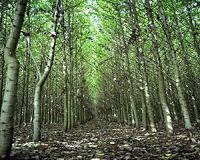| . |  |
. |
Paris (AFP) Dec 15, 2010 Climate change is pushing Arctic mammals to mate with cousin species, in a trend that could be pushing the polar bear and other iconic animals towards extinction, biologists said on Wednesday. "Rapidly melting Arctic sea ice imperils species through interbreeding as well as through habitat loss," they said in a commentary appearing in the British science journal Nature. "As more isolated populations and species come into contact, they will mate, hybrids will form, and rare species are likely to go extinct." In 2006, they said, scientists were startled to discover a "pizzly," or a hybrid of a grizzly bear and a polar bear, and in 2010, another bear shot dead by a hunter also was found to have mixed DNA. Global warming has hit the Arctic region two or three times harder than other parts of the planet, redesigning the environment in which dozens of terrestrial and marine mammals live. In particular, the shrinking of the Arctic ice cap -- set to disappear in summer by century's end without a deep cut in greenhouse gas emissions -- has pushed polar bears outside their normal hunting grounds. The fierce predators use the edge of the ice cap as a staging area to stalk seals, their preferred food. How far Arctic species have intermingled is unclear, although some important examples abound, according to the article, lead-authored by Brendan Kelly of the US National Oceanic and Atmospheric Administration (NOAA). Last year what appeared to be cross between a bowhead and a right whale was photographed in the Bering Sea between Alaska and Russia. There are fewer than 200 North Pacific right whales left, and the far more numerous bowhead could, through interbreeding, quickly push this remnant population to extinction, the researchers warned. Different species of Arctic porpoises and seals are also known to have produced offspring with a mixed bag of chromosomes. Hybridization is not necessarily a bad thing in itself, and has been a key driver of evolution, Kelly said. But when it is caused by human activities, the phenomenon tends to occur over a short period, which leads to a damaging drop in genetic diversity. When mallard ducks were introduced to New Zealand in the late 19th century, for example, they mated with native grey ducks. Today, there are few, if any, pure grey ducks left. In the case of "pizzlies," the mixed heritage poses a survival risk: while showing the polar bear's instinct for hunting seals, one such hybrid has the morphology of a grizzly, which is poorly adapted to swimming. Kelly's team recommended culling hybrid species when possible, as has been done for the offspring of red wolves and coyotes in the United States. They also pointed out that sharply reducing the amount of carbon dioxide (CO2) pumped into the atmosphere will help slow the disappearance of the Arctic ice cap.
Share This Article With Planet Earth
Related Links Darwin Today At TerraDaily.com
 Scientists Unravel More Details Of Plant Cell-Wall Construction
Scientists Unravel More Details Of Plant Cell-Wall ConstructionUpton NY (SPX) Dec 15, 2010 One big challenge in converting plants to biofuels is that the very same molecules that keep plants standing up make it hard to break them down. Now scientists at the U.S. Department of Energy's (DOE) Brookhaven National Laboratory are unraveling details of how plant cells' structural supports - their cell walls - are made, with the hope of finding ways to change their composition for more effic ... read more |
|
| The content herein, unless otherwise known to be public domain, are Copyright 1995-2010 - SpaceDaily. AFP and UPI Wire Stories are copyright Agence France-Presse and United Press International. ESA Portal Reports are copyright European Space Agency. All NASA sourced material is public domain. Additional copyrights may apply in whole or part to other bona fide parties. Advertising does not imply endorsement,agreement or approval of any opinions, statements or information provided by SpaceDaily on any Web page published or hosted by SpaceDaily. Privacy Statement |